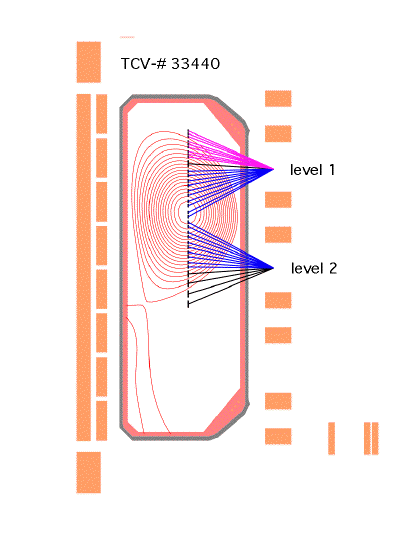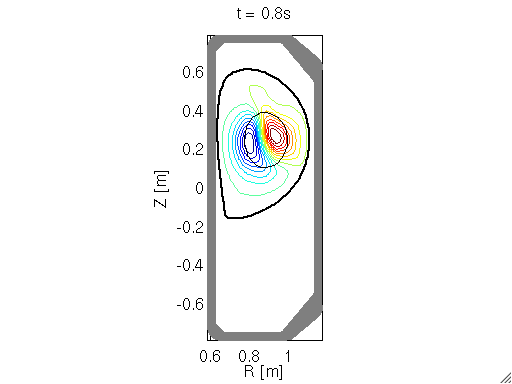Mandatory diagnostics for a safe TCV operation are the following: the far infrared interferometer (FIR), the magnetics probes. Thomson scattering diagnostic
|
The Thomson scattering system (TCV-TS) is the main diagnostic for the measurement of the spatial profiles of the electron temperature and density on TCV. Sets of camera lenses are installed on 3 horizontal ports in sector 5 to allow the measurements at 35 positions along the vertical laser beam (passing the plasma at R=0.9m). The scattered light is collected using fiber bundles and sent to filter polychromators for spectral analysis. The beams from a cluster of 3 high-power repetitively pulsed Nd:YAG lasers are focused into the plasma forming a narrow fan, which appears as a single laser beam when viewed by the detection optics. Individual triggering of the lasers at different delays permits to adapt the effective sampling rates to the requirements of the measurements. The sensitivity of the system is measured using Raman scattering from molecular nitrogen gas filled into the TCV vessel. This calibration permits independent measurements of the electron density. Nevertheless, a cross calibration to the line integrated density obtained from a multi-chord FIR interferometer is performed for consistency. Contact person: Patrick Blanchard |
 |
|
Interferometry is the most common method to measure the electron density and its time evolution in a tokamak plasma. This is due to the fact that interferometric methods measure pathlength differences, like those caused by changes in the refractive index. Chosing a wavelength in the sub-millimeter range (far infrared or FIR), the refractive index of the plasma for an electromagnetic wave with polarisation parallel to the magnetic field is a simple function of the electron density. On TCV a Mach-Zehnder interferometer is used to measure the line-integrated density along 14 parallel chords in vertical direction. The system comprises a continuous wave (CW) FIR laser emitting at 214 microns and a multi-element detector unit (InSb hot-electron bolometer). The optical components are attached to a rigid support structure embracing the tokamak vessel. A highly stable and rigid structure is important to avoid that mechanical vibrations perturb the measurement. Contact person: Patrick Blanchard |
|
TCV tomographic system consists of 10 pinhole cameras at a single toroidal location. Each camera is equipped with a linear array of 20 p-n junction silicon photodiodes resulting in 200 lines of sight covering the whole plasma cross section. Each camera has 47 micron Be filter and most efficient for the detection of photons with energies between 1 keV and 10 keV which covers the thermal spectrum of most TCV plasmas. By default, signals are digitized at the acquisition rate of 200 kHz. Contact person: Benoit Labit |
 |